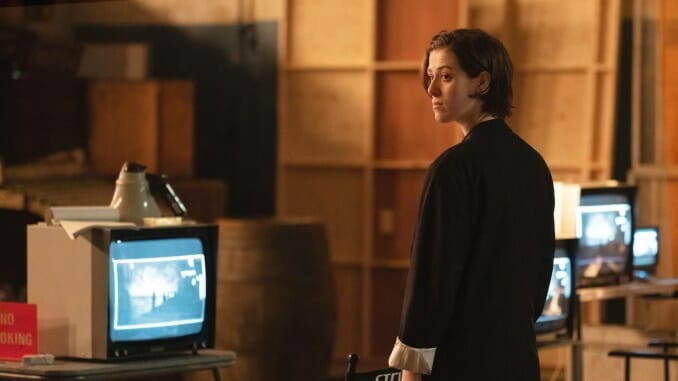The Souvenir Part II Is a Meticulous and Mesmerizing Deconstruction of Memory

If the insular bubble of a contentious relationship is the focus of Joanna Hogg’s autobiographical film The Souvenir, then the piercing perspective of outsiders in The Souvenir Part II completely shatters the previous film’s detached disillusionment. This incongruous shift manages to complement rather than detract, allowing for both candid cognizance and deliberate deconstruction of distinct memories. While the first installment depicts the filmmaker’s tumultuous relationship with a mysterious older man while studying film in her early 20s, Part II actively reflects on the process of mining one’s trauma for artistic gain—how it can mend and muddle the lingering specter of life long ago.
After the relationship between Julie (Hogg’s avatar Honor Swinton Byrne) and Anthony (Tom Burke) tragically dissolves, she deals with the pain (and puts off processing) by throwing herself into her studies in preparation for her capstone. Though she originally sets out to direct a narrative film about the mining community in the working class city of Sunderland, her recent loss entices her to instead draw from her lived experiences. Without Anthony in the picture, characters simply touched upon in the first installment are given much greater emphasis; with Julie unencumbered by the constant demands and strained anxiety innate to dating Anthony, previously ancillary characters become newfound sources of support and dissension.
Among these characters is Rosalind (Tilda Swinton), Julie’s mother, who is overjoyed to have her daughter staying at the rural family residence on a regular basis—but this increased quality time is also flecked with small, snide comments and a stuffy English inaffection. Her mother’s precious pack of distinguished hounds and her recent ceramics obsession often dominate space and conversation, leaving little room for meaningful interactions with her daughter. However, there is also a concerted effort on Hogg’s part to present a more thorough portrait of Julie—in lieu of recollection largely relegating her to the role of wronged victim, Part II is interested in uncovering her imperfect impulses and complexes—her transactional familial ties and sheltered naivete among them.
-

-

-

-

-

-

-

-

-

-

-

-

-

-

-

-

-

-

-

-

-

-

-

-

-

-

-

-

-

-

-

-

-

-

-

-

-

-

-

-








































